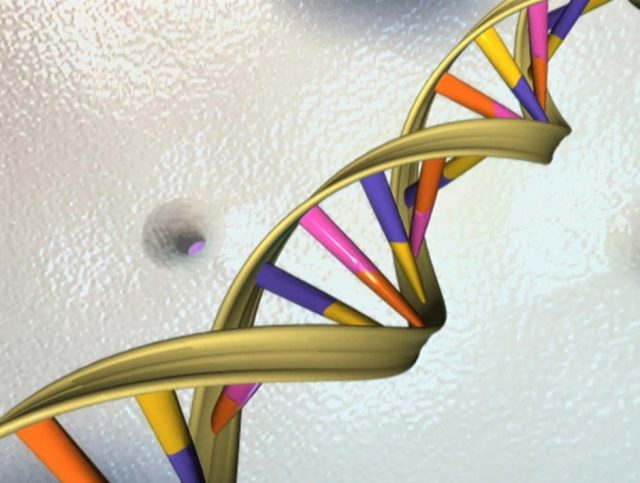
CHICAGO — U.S. scientists on Wednesday unveiled two new molecular editing tools designed to fix mutations that cause the majority of human genetic diseases, some of which have no known treatment.
One technique, by David Liu of Harvard University and the Broad Institute of MIT and Harvard, offers a highly precise way to fix single-letter mistakes in genes, which are stretches of deoxyribonucleic acid or DNA.
A second, by Broad Institute molecular biologist Feng Zhang, focuses on editing ribonucleic acid or RNA, which carries the genetic instructions to make proteins, without altering DNA.
Both techniques build off of the game-changing CRISPR-Cas9 gene editing tool, a type of molecular scissors for trimming unwanted parts of the human genome to replace with new stretches of DNA. The genome consists of six billion DNA letters, or chemical bases.
In a paper published on Wednesday in the journal Nature, Liu and colleagues build on his pioneering work called base editing. Unlike CRISPR, which causes breaks in DNA, base editing chemically corrects single-letter errors in DNA.
“CRISPR is like scissors, and base editors are like pencils,” Liu said in a statement.
Base editing tinkers with DNA’s four chemical bases, adenine (A), cytosine (C), guanine (G) and thymine (T). It takes two bases to form base pairs which make up rungs in the spiral DNA ladder, and they follow specific rules — C pairs with G, and T pairs with A.
Single-letter mistakes, called point mutations, can give rise to genetic diseases. Last year, Liu’s team described a base editor that could change CG base pairs into AT pairs.
In a paper published in September, researchers at Sun Yat-sen University in China described using that system to correct a faulty gene that causes the blood disorder called beta-thalassemia in human embryos.
For the latest study, Liu’s lab researchers engineered an entirely new enzyme that could convert an AT to a GC pair, something that had previously not been possible.
The research goal was tantalizing because about half of the 32,000 disease-associated point mutations are caused when an GC base pair mistakenly becomes an AT in a specific spot in the genome.
“They came up with an enzyme that is very specific and very effective,” said Dana Carroll, a gene-editing expert at the University of Utah who was not involved in the research. “It really was a heroic effort, and very beautifully done.”
Carroll said gene editing enzymes would be very useful tools for both research and practical studies in medicine and possibly agriculture.
Since base editing does not cause a break in the DNA, it might produce more predictable results than CRISPR, which can cause “slightly unpredictable” insertions or deletions in the genetic code, Professor Robin Lovell-Badge of the Francis Crick Institute in London said in an email.
In the second study published in Science, Zhang, an early developer of CRISPR-Cas9 technology, created a new version of CRISPR that can edit RNA, which could help scientists make precise changes in cells at different points in development.
David Cox, a graduate student in Zhang’s lab and a lead author on the study, said the RNA editing system, called REPAIR, can “fix mutations without tampering with the genome.” However, the changes are not permanent because RNA degrades over time.
Carroll said both editing systems offer the chance to correct specific disease mutations, either in DNA or messenger RNA. But neither is ready for human trials yet.
“There are a number of hurdles that need to be overcome, including proving efficiency, specificity and safety,” he said. The scientists also need to develop ways to deliver the editing systems into the correct cells in the body.









